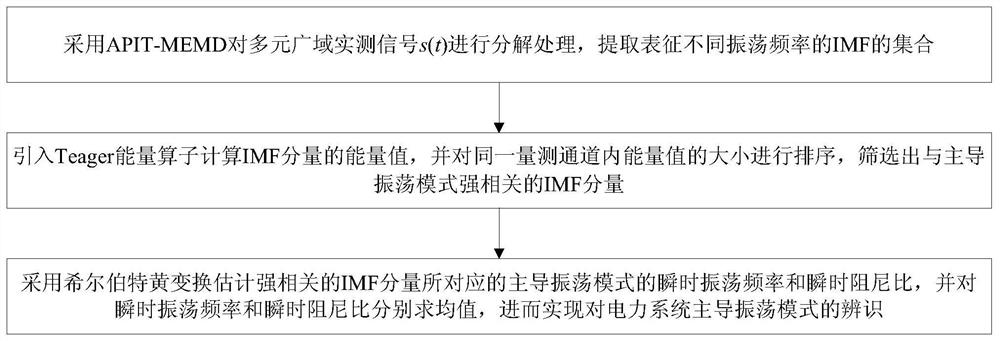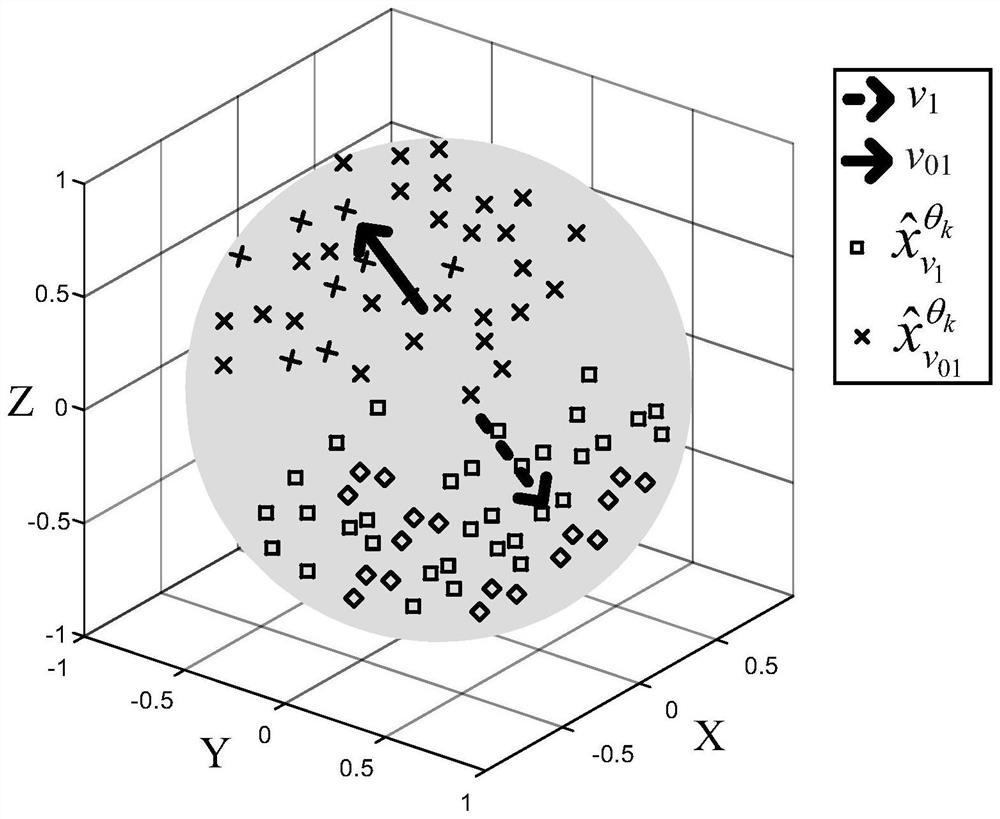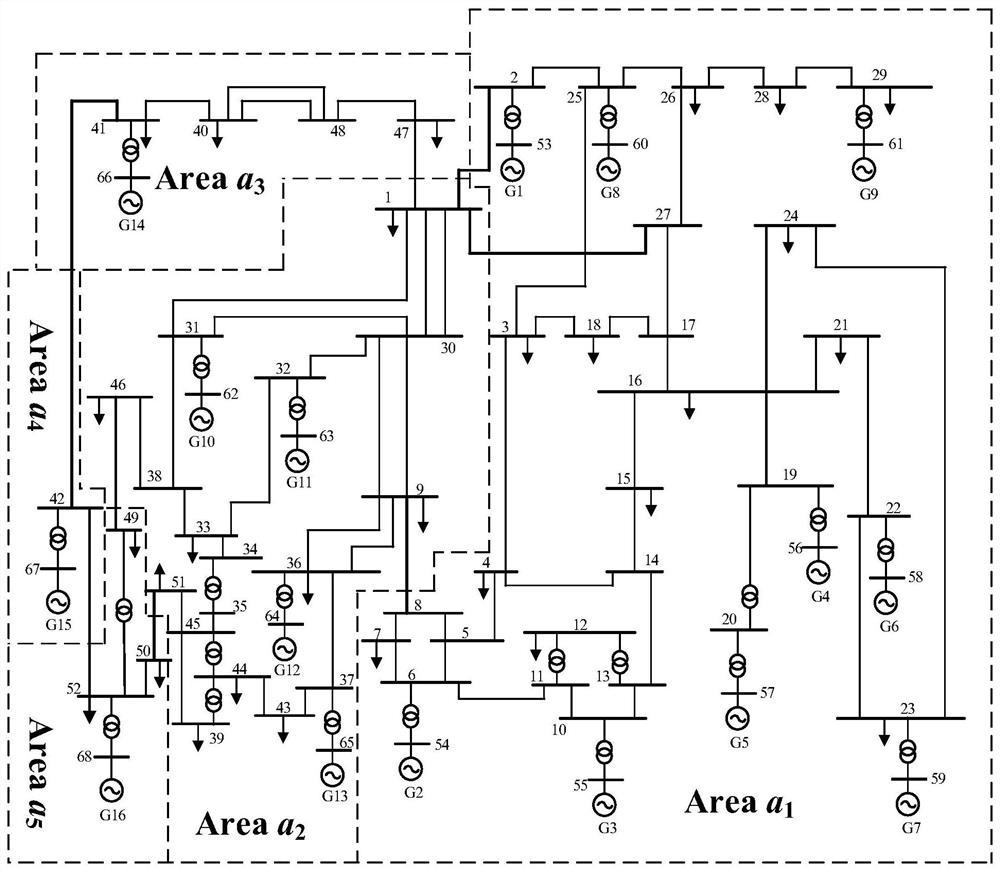Mode Identification Method of Low Frequency Oscillation in Power System Based on apit-memd
A low-frequency oscillation and identification method technology, applied in system integration technology, information technology support system, reducing/preventing power oscillation, etc., can solve problems such as unsatisfactory and lack of solutions for multivariable signals, and achieve improvement of small disturbances The effects of stability, solving power imbalance and correlation among variables, and high identification accuracy
- Summary
- Abstract
- Description
- Claims
- Application Information
AI Technical Summary
Problems solved by technology
Method used
Image
Examples
example 1
[0045] An APIT-MEMD-based low-frequency oscillation mode identification method for power systems, see figure 1 , the method includes the following steps:
[0046] 101: Use APIT-MEMD to decompose the multivariate wide-area measured signal s(t), and extract the collection of IMFs representing different oscillation frequencies;
[0047] Wherein, the above wide-area measured signal s(t) is the measured data collected by all PMUs. For example, one PMU collects the rotor angle signal of one generator, and the data collected by n PMUs is the wide-area measured data.
[0048]102: Introduce the Teager energy operator to calculate the energy value of the IMF component, sort the energy value in the same measurement channel, and filter out the IMF component that is strongly correlated with the dominant oscillation mode;
[0049] 103: Use Hilbert-Hung Transform (HHT) to estimate the instantaneous oscillation frequency and instantaneous damping ratio of the dominant oscillation mode corres...
example 2
[0053] The scheme in Example 1 will be further introduced in combination with specific calculation formulas and examples, see the description below for details:
[0054] 201: Utilize the real-time data acquisition function of the PMU device to obtain multi-channel wide-area measurement data, and normalize the measurement data;
[0055] Among them, normalization is the process of standardizing the measurement data. The normalized data is simple and easy to compare, and can fully show the relationship between the standard deviation of the data and retain the original information of the data.
[0056] 202: Introduce APIT-MEMD preprocessing to the PMU measured information in each measurement channel after standardization, where the APIT-MEMD algorithm specifically includes:
[0057] 1) Establish a uniformly distributed direction vector set in the d-dimensional space;
[0058] Among them, mathematically, the (d-1)-dimensional hypersphere belongs to the d-dimensional space, and a d...
example 3
[0109] In the following, combined with specific examples, aiming at the power system oscillation mode identification method based on the APIT-MEMD algorithm proposed in the embodiment of the present invention, this example takes the 16-machine 68-node system as an example to carry out simulation analysis and verification. The topology of the 16-machine 68-node system Figure such as image 3 As shown, see the description below:
[0110] In this calculation example, a three-phase short-circuit fault is set between bus 46 and bus 49, and the fault is set to occur in 0.1s and cut off in 0.2s. Taking G1 as the reference machine, the rotor angle signals of other generator sets relative to G1 are used as signals to be identified. The 16 generators generate a total of 15 sets of relative rotor angle signals, and the sampling frequency is 0.01s. Figure 4 It is the swing curve of the rotor angle of each generator set relative to G1 after a fault occurs. Since the signal tends to be s...
PUM
 Login to View More
Login to View More Abstract
Description
Claims
Application Information
 Login to View More
Login to View More - R&D
- Intellectual Property
- Life Sciences
- Materials
- Tech Scout
- Unparalleled Data Quality
- Higher Quality Content
- 60% Fewer Hallucinations
Browse by: Latest US Patents, China's latest patents, Technical Efficacy Thesaurus, Application Domain, Technology Topic, Popular Technical Reports.
© 2025 PatSnap. All rights reserved.Legal|Privacy policy|Modern Slavery Act Transparency Statement|Sitemap|About US| Contact US: help@patsnap.com



